Canon EF 16-35 mm f/2.8L III USM
4. Image resolution
Let’s check how the tested Canon lens compares here – its results in the frame centre at 16,24 and 35 mm presents the graph below.
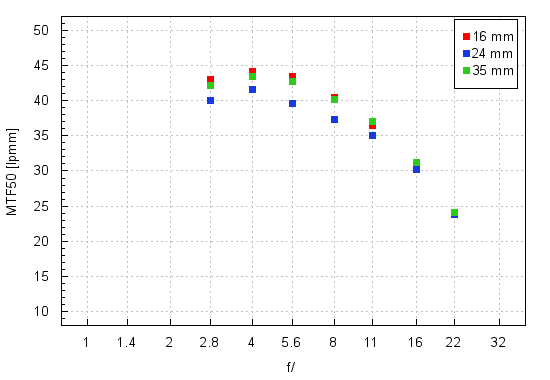
Please Support UsIf you enjoy our reviews and articles, and you want us to continue our work please, support our website by donating through PayPal. The funds are going to be used for paying our editorial team, renting servers, and equipping our testing studio; only that way we will be able to continue providing you interesting content for free. |
- - - - - - - - - - - - - - - - - - - - - - - - - - - - - - - - - - - - - - - - - - - - - - - -
In the frame centre the performance is simply exemplary, with small differences between particular focal lengths. Extreme focal lengths represent practically identical level within the margin of error but the middle lags behind them a bit. In all cases at the maximum relative aperture the MTFs reach a very high value of 40 lpmm, sometimes even exceeding it. The maximum results get to 44 lpmm – a quite high level.
How do these results compare to the results of the predecessor of the lens or its rivals? The maximum MTFs of the predecessor were very similar but the new lens fares better by f/2.8 and f/4.0 so the improvement is noticeable. What’s interesting, the slower Canon EF 16–35 mm f/4L IS USM in the 16-24 mm range had slightly higher results but it lagged distinctly behind its faster brother at the maximum focal length. It’s also worth adding that the resolution of the Canon EF 16–35 mm f/2.8L III USM in the frame centre is practically the same as the resolution of the cheaper Tokina AT-X PRO FX SD 16–28 mm f/2.8 (IF) and also cheaper Tamron 15–30 mm f/2.8 Di VC USD. All those three lenses have results very close to 40 lpmm at the maximum relative aperture and on stopping down by 1-2 EV they get to a level of 42-45 lpmm.
Now let’s check how the tested lens performs on the edge of the APS-C sensor by consulting the graph below.
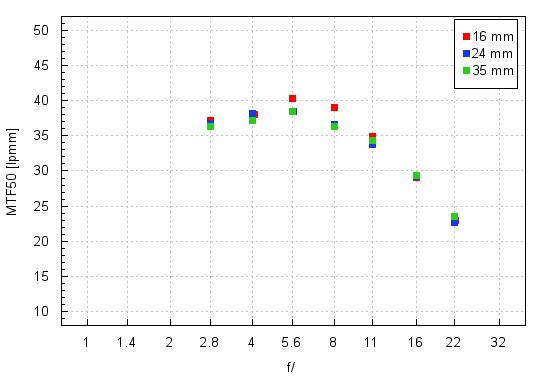
When you compare these values to the results of the predecessor, which had to be closed down to near f/5.6 in order to produce useful images, you notice significant improvement immediately. Here already from the maximum relative aperture the MTFs exceed 35 lpmm and they can reach about 40 lpmm at the peak of the performance. Taking into account the parameters of the tested lens it is a really excellent result. The Canon defeats not only its predecessor but also much better lenses like the Tamron 15-30 mm and the Tokina 16-28 mm. What’s interesting, the slower Canon EF 16-35 mm f/4L IS USM shows a similar performance so both Canons devices fare great in this category.
Will the results on the demanding edge of full frame be equally good? Let’s glance at another graph.
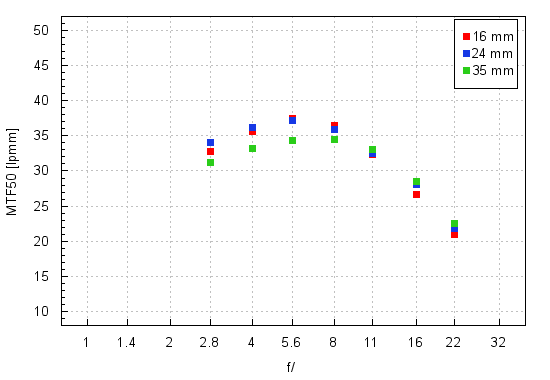
There are no two ways about it: the Canon might be an example for rival lenses. Defeating the predecessor of the tested lens wasn’t difficult because its performance was very weak indeed. Still as the only one device of that kind tested by us the new lens is able to provide fully useful images already from the maximum relative aperture and at practically every focal length. None of full frame lenses with focal lengths starting from 15-17 mm and ending at 28-35 mm, tested by us so far, has been able to perform equally well.
To sum up it seems Canon have finally done their homework and presented a 16-35 mm f/2.8 lens which is not only sharp in the frame centre but also provides images of very high quality on the edge of full frame. Truly impressive!
At the end of this chapter traditionally we present crops taken from photos of our resolution testing chart, saved as JPEG files.
| Canon 5D MkIII, JPEG, 16 mm, f/4.0 |
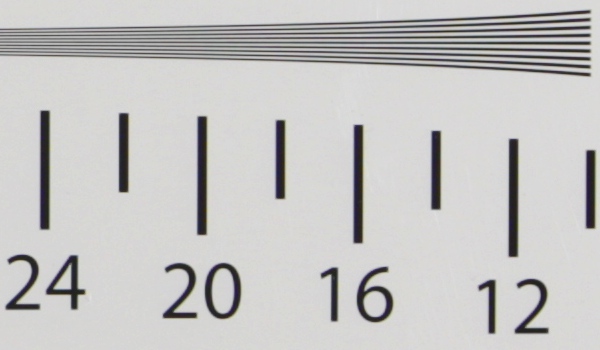 |
| Canon 5D MkIII, JPEG, 24 mm, f/2.8 |
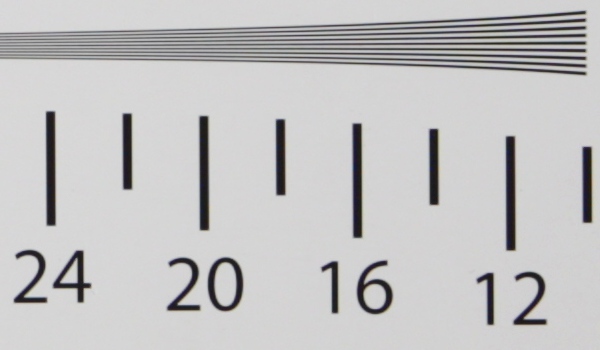 |






